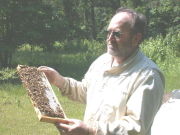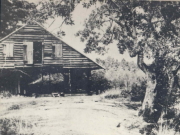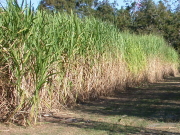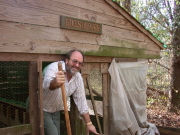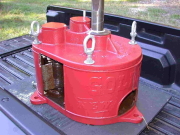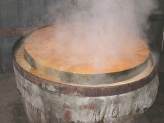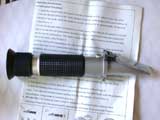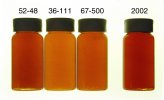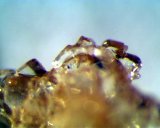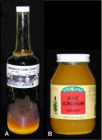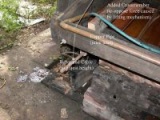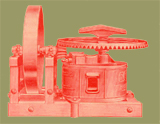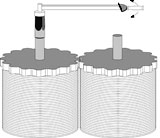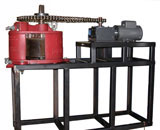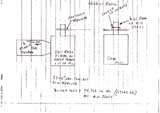Sugar Cane - Essays
Fructose, glucose, and sucrose are the three main sugars in cane juice. This essay discusses the chemical and physical properties of these sugars that are of interest in making syrup.
During syrup making, the juice and nascent syrup are exposed to various metals. This essay discusses the incorporation of these metals into the syrup and why that may be important. Regulations concerning exposure of food to certain metals are referenced.
This brief entry provides brix values for several sugar-cane cultivars that are used for syrup production. Brix is essentially a measurement of the sugar content of juice and thus higher values predict less time and energy to reduce juice to syrup. (Thanks to Charles Deese and Ken Christison for use of each's refractometer.)
Many sugar-cane cultivars are used to produce syrup in South Georgia and North Florida. Syrups produced from the three cultivars generally recommended by the extension services (C.P. 36-111, C.P. 52-48, and C.P. 67-500) are compared in this essay.
Sucrose is the least soluble of the three predominant sugars in syrup. Enzymatic hydrolysis of sucrose into the invert sugars, glucose and fructose, is therefore one means of preventing crystallization in syrup. Modern well-defined commercial preparations of invertase take the guesswork out of using this enzyme.In this essay, some experiments using invertase under field conditions are described.
This part of Southern Matters focuses on sugar cane, but because of the similarities in syrup making from sorghum and sugar cane, some sorghum producers might read these essays too. Thus, this very brief commentary mentions points, clarifying I hope, of interest to sorghum producers.
This page is divided into two parts. In the first part, the basic outline for construction of an evaporator is laid out. In the second part, photographs of a skimming trough that may be built onto the sides of the evaporator are shown.
Vertical mills are sufficient for most small-scale syrup producers and they are more abundant and less expensive than horizontal mills. This calculator provides target RPMs for various mills.
Establishing the target RPM (above) is the first step in a design for mechanization of an animal-powered vertical cane mill. The second step, provided by this calculator, is to determine the torque requirement.
This calculator returns the power requirement for mechanization of an animal-powered vertical cane mill. Required inputs are the mill RPM and the desired torque, both values being provided by the calculators above.
The three calculators above provide a black-box approach to mechanizing a vertical mill. The data linked here provide the basic information that one might use to engineer his or her own solution. The mill used is shown in the last calculator, above, and the powertrain layout, here. (Many thanks to Joe Faragasso and Ralph Anderson for assistance.)

